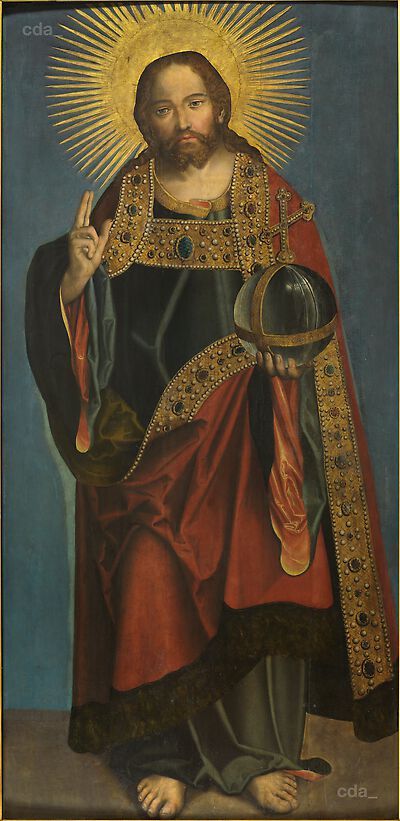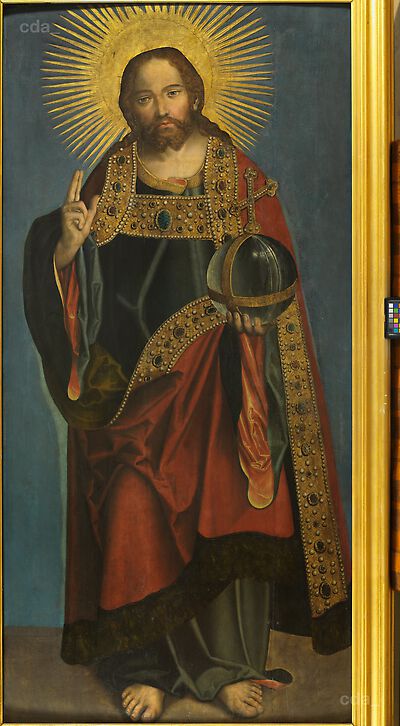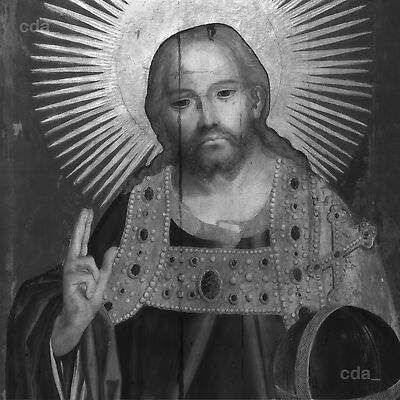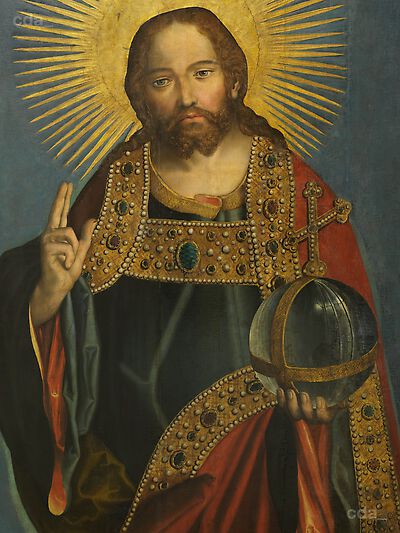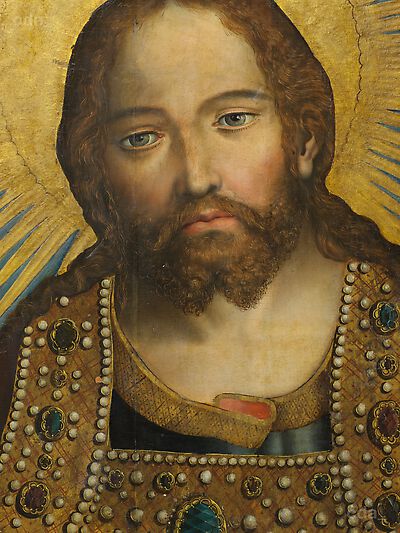Christ stands larger than life-sized on a narrow strip of ground against a light blue background. His right hand is raised in an attitude of blessing and he holds a globe crowned with a cross in his left hand. A further coat falls off his shoulders providing a powerful elaboration
Christ stands larger than life-sized on a narrow strip of ground against a light blue background. His right hand is raised in an attitude of blessing and he holds a globe crowned with a cross in his left hand. A further coat falls off his shoulders providing a powerful elaboration to animate the broad gold braid. The insides of the deep sleeves stand out against the mass of drapery blazing yellowish red. The stiff robe of gold and silk defines the figure with simple outlines.
The feet indicate a precarious stance similar to the figure of Judas Thaddaeus in Cranach's series of woodcuts of the apostles. The central axis is left by a slight inclination of the head. The low-angle view of the face, anticipated given the size of the figure, is thus countered. The enormous figure appears almost to sway.
By enlarging all forms the resulting head height measures 32.5 cm and the face appears unusually broad. Striking are the eye openings, which make the face appear frozen. However the eyes are painted in Cranach's usual technique, remote from the crudity of some workshop paintings. The beard is also executed with subtlety. Apart from these barely perceptible gems single sections of the braid with its pearls and precious stones as well as the freely painted ornamentation are to be admired. The formation of the halo around the head is unusual and may be the result of later reworking. However there is a woodcut by Cranach illustrating a halo of a similar shape.
[Schade, in Kunde 2006, 137, 139]
